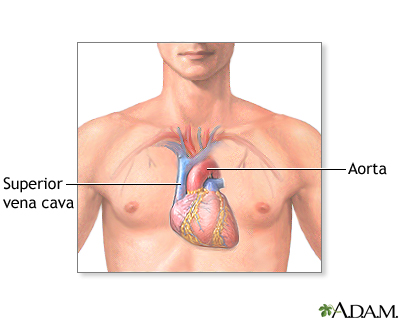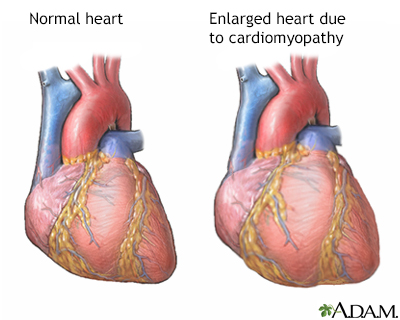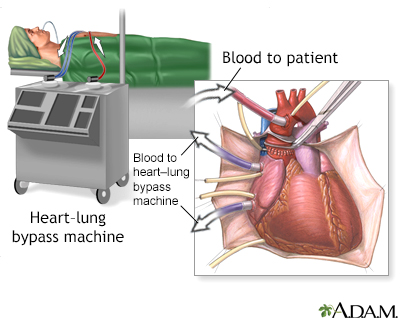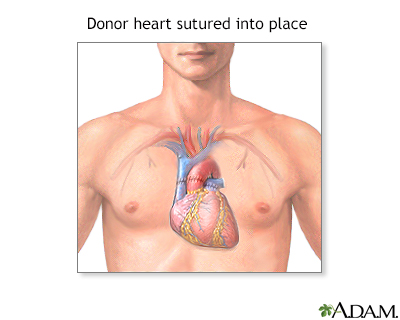Heart transplant - series

Normal anatomy
The heart is located in the chest cavity, or thorax. It pumps blood from the lungs to the rest of the body.

Indications
A heart transplant may be recommended for heart failure caused by:
- Coronary artery disease
- Cardiomyopathy (thickening of the heart walls)
- Heart valve disease with congestive heart failure
- Severe congenital heart disease
Heart transplant surgery is not recommended for patients who have:
- Kidney, lung, or liver disease
- Insulin-dependent diabetes mellitus (IDDM)
- Other life-threatening diseases

Procedure
Heart transplants are the third most common (corneas and kidneys are the most common) transplant operations in the U.S. (over 1,500 cases per year). A healthy heart is obtained from a donor who has suffered brain death but remains on life-support. The healthy heart is transported in a special solution that preserves the organ.
While the patient is deep asleep and pain-free (general anesthesia), an incision is made through the breast bone (sternum). The patient's blood is re-routed through tubes to a heart-lung bypass machine to keep the blood oxygen-rich and circulating. The patient's diseased heart is removed and the donor heart is stitched in place.

Aftercare
Heart transplant prolongs the life of a patient who otherwise would die. About 80% of heart transplants are alive two years after the operation. The main problem, as with other transplants, is the rejection of the new heart. If rejection can be controlled, then survival can be increased up to 10 years or more. Immunosuppressive drugs must be taken indefinitely. Relatively normal activities can resume as soon as the patient feels well enough and after consulting with his or her doctor. However, vigorous physical activities should be avoided.
The major problems are the same all major organ transplants face:
- A shortage of donor hearts
- Rejection of the transplanted heart
- Cost of the surgery and post-operative care, including immunosuppressive drugs
BACK TO TOP
Review Date: 4/16/2023
Reviewed By: Mary C. Mancini, MD, PhD, Cardiothoracic Surgeon, Shreveport, LA. Review provided by VeriMed Healthcare Network. Also reviewed by David C. Dugdale, MD, Medical Director, Brenda Conaway, Editorial Director, and the A.D.A.M. Editorial team.

Health Content Provider
06/01/2025
|
A.D.A.M., Inc. is accredited by URAC, for Health Content Provider (www.urac.org). URAC's accreditation program is an independent audit to verify that A.D.A.M. follows rigorous standards of quality and accountability. A.D.A.M. is among the first to achieve this important distinction for online health information and services. Learn more about A.D.A.M.'s editorial policy, editorial process and privacy policy. A.D.A.M. is also a founding member of Hi-Ethics. This site complied with the HONcode standard for trustworthy health information from 1995 to 2022, after which HON (Health On the Net, a not-for-profit organization that promoted transparent and reliable health information online) was discontinued. |
The information provided herein should not be used during any medical emergency or for the diagnosis or treatment of any medical condition. A licensed medical professional should be consulted for diagnosis and treatment of any and all medical conditions. Links to other sites are provided for information only -- they do not constitute endorsements of those other sites. © 1997- 2024 A.D.A.M., a business unit of Ebix, Inc. Any duplication or distribution of the information contained herein is strictly prohibited.
